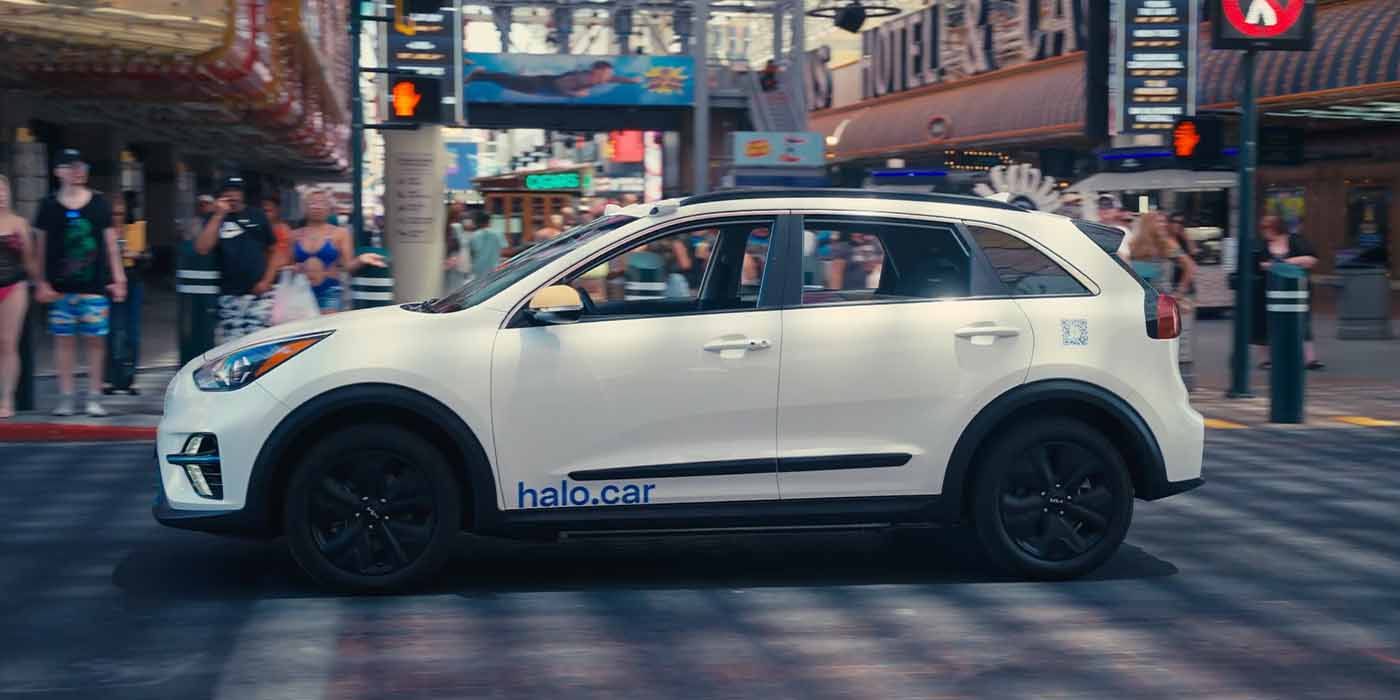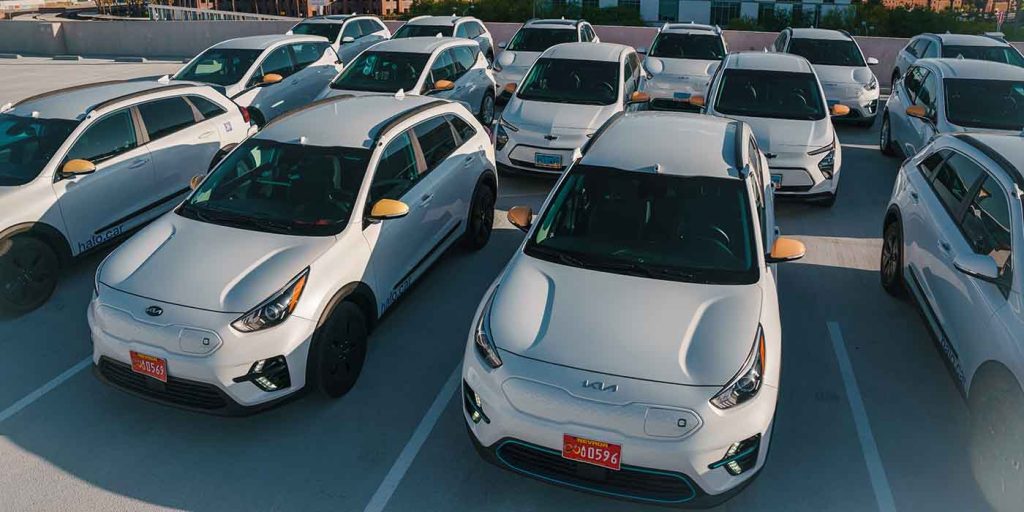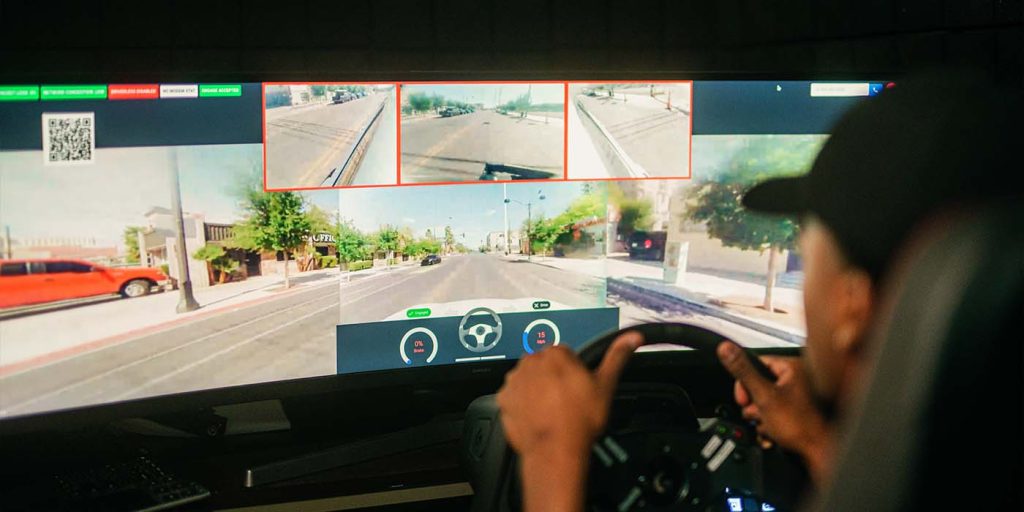
Unique remote-piloted EV delivery service Halo.Car has taken a big step forward in its progress of transitioning more people over to electric vehicles. Today, the carshare startup announced it had removed the safety drivers from all its EVs, claiming to be the first company in the world to enable electric vehicles to be commercially remote-piloted on public roads without a human present inside. Watch as the empty EV turns heads around downtown Las Vegas in the video below.
Halo.Car is a Las Vegas-based startup focused on taking the carshare program and turning it on its head. Instead of developing another business requiring designated parking areas or customers to pick up and return their rented vehicles somewhere, Halo.Car drops off and picks up the EV wherever you are.
Here’s the kicker, though… there’s no one inside.
We’ve covered plenty of other startups implementing autonomous robotaxi routes in California and even Halo.Car’s home city of Vegas, but this startup team feels fully-autonomous taxis are still years away. Halo.Car uses remote drivers authorized to operate the fleet of EVs using video and sensor data streamed from proprietary software and hardware retrofitted onto electric Kia Niros.
The startup’s carshare business has been partially underway in the streets of Vegas, but with several fail-safes in place to ensure the safety of everyone inside and outside of the vehicles. This past January, during CES, I got the chance to visit Halo.HQ and ride along with founder and CEO Anand Nandakumar (and a safety driver), who walked me through the company’s four-phase process in reaching seamless carshare mobility:
- Deliveries of the car, manual driver inside the vehicle
- Deliveries of the car by a remote pilot, with a safety driver inside
- Deliveries of the car remotely with no one inside, with a chase car
- Deliveries of the car solely via a remote pilot
At the time, I experienced Halo.Car during phase two. Today, however, the startup announced it entered phase three, removing the safety driver altogether.
Halo.Car continues to prove remote piloting is viable
Following four years of operating with safety drivers present inside its EVs, Halo.Car shared that it has gone driverless… inside its Kias, at least. Beginning today, customers in Las Vegas can book a Halo.Car, which will be remotely piloted to their designated location without anyone inside.
From there, the customer can hop in, use the EV at will, and then park it and end their rental whenever they are done. From there, a remote driver at HQ will once again take control of the EV, which will appear to drive off on its own. Talk about “ghost ridin’ the whip.” Nandakumar spoke to Halo.Car’s next phase achievement:
Rolling out driverless delivery is a huge step towards our goal of offering ubiquitous carshare on-demand. We want to make it so easy to get a car on-demand that you no longer need to own a car, or use a rideshare service – you just call a car to drive when you need to go somewhere. Driverless delivery is critical to making this vision of on-demand vehicles economically viable.
After testing for thousands of hours, we’ve proven that our remote-piloting technology is robust enough to take the safety driver out. This commercial launch of driverless delivery is a landmark achievement not only for our company, but for the entire transportation industry. We are really pushing the boundaries of what people believed was possible.
The EVs, which you can peruse below, have been equipped with cameras, modems, antennas, and other proprietary components developed by Halo.Car to enable remote driving over T-Mobile’s 5G network. The company shared it has also developed proprietary algorithms to ensure the data streams utilize the strongest network connection available at any given time.
While today’s news is exciting, remember that Halo.Car is only in phase three. That means the driverless EVs will still be followed by a second vehicle to monitor and assist if any issues arise. Soon, however, the chase cars will join the safety drivers on the sidelines back at HQ while the EVs operate on public roads without anyone inside or behind.
Looking ahead, Halo.Car says it will expand driverless deliveries to other parts of Las Vegas outside of downtown in the coming months while simultaneously bolstering its fleet to hundreds of EVs before expanding to new cities in 2024.
Watch Halo.Car’s driverless EVs turn heads around Vegas in the video below.
FTC: We use income earning auto affiliate links. More.

![Halo.Car begins operating remote-piloted EVs on public roads without a human present [Video]](https://i0.wp.com/electrek.co/wp-content/uploads/sites/3/2023/06/Halo-Car-Vegas-Hero.jpg?resize=1200,628&quality=82&strip=all&ssl=1)







